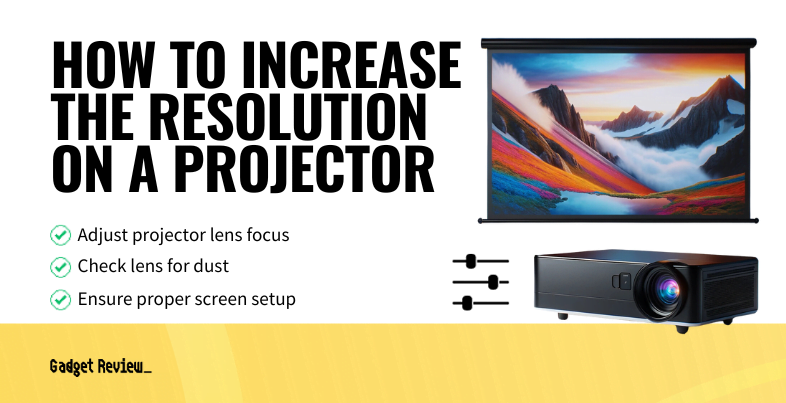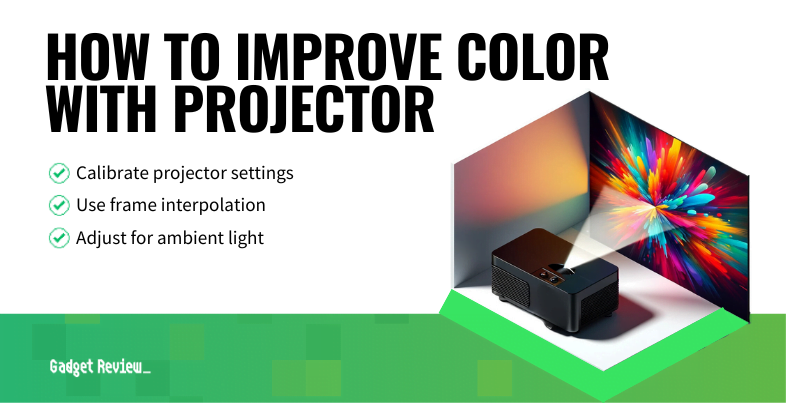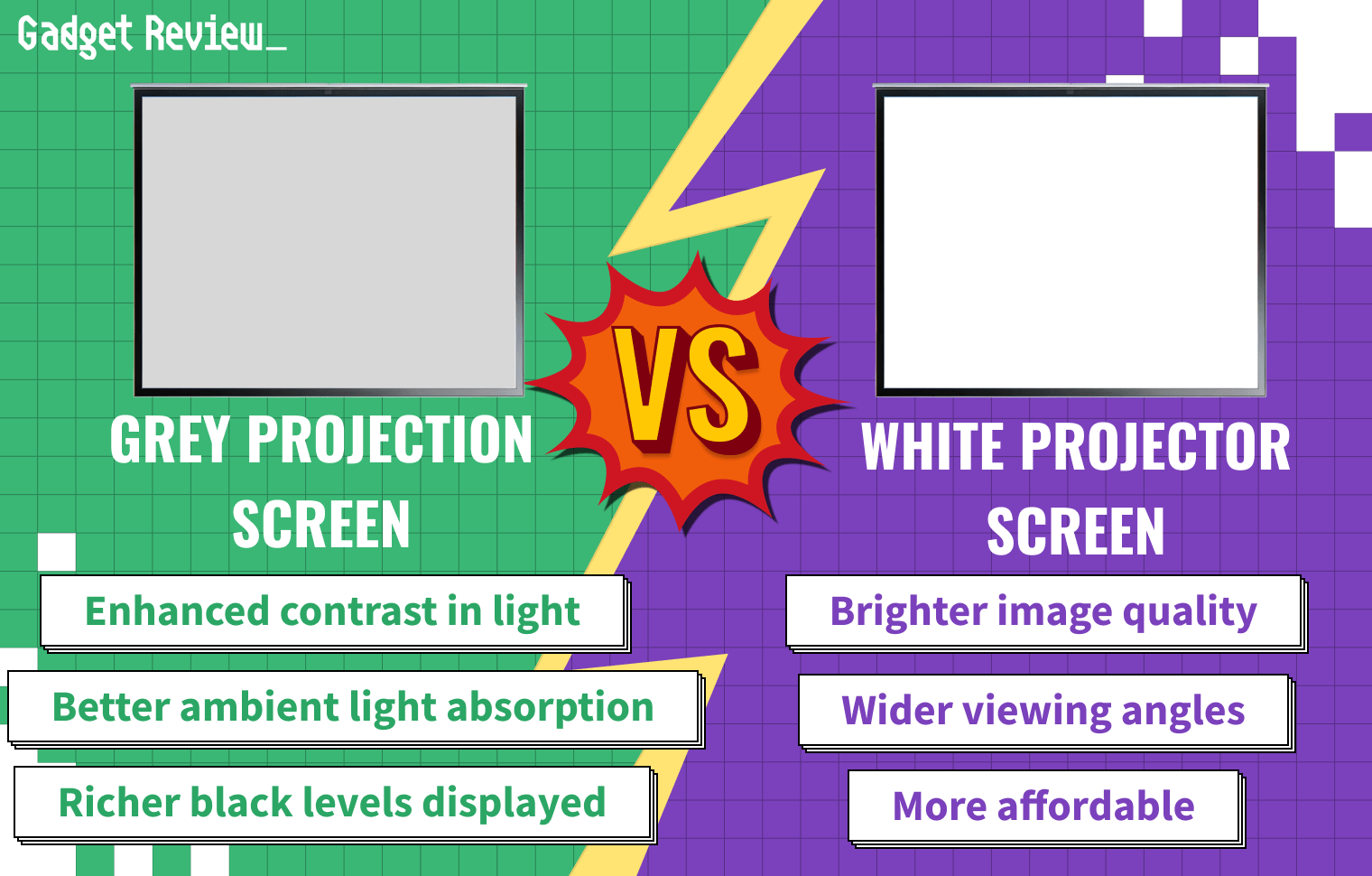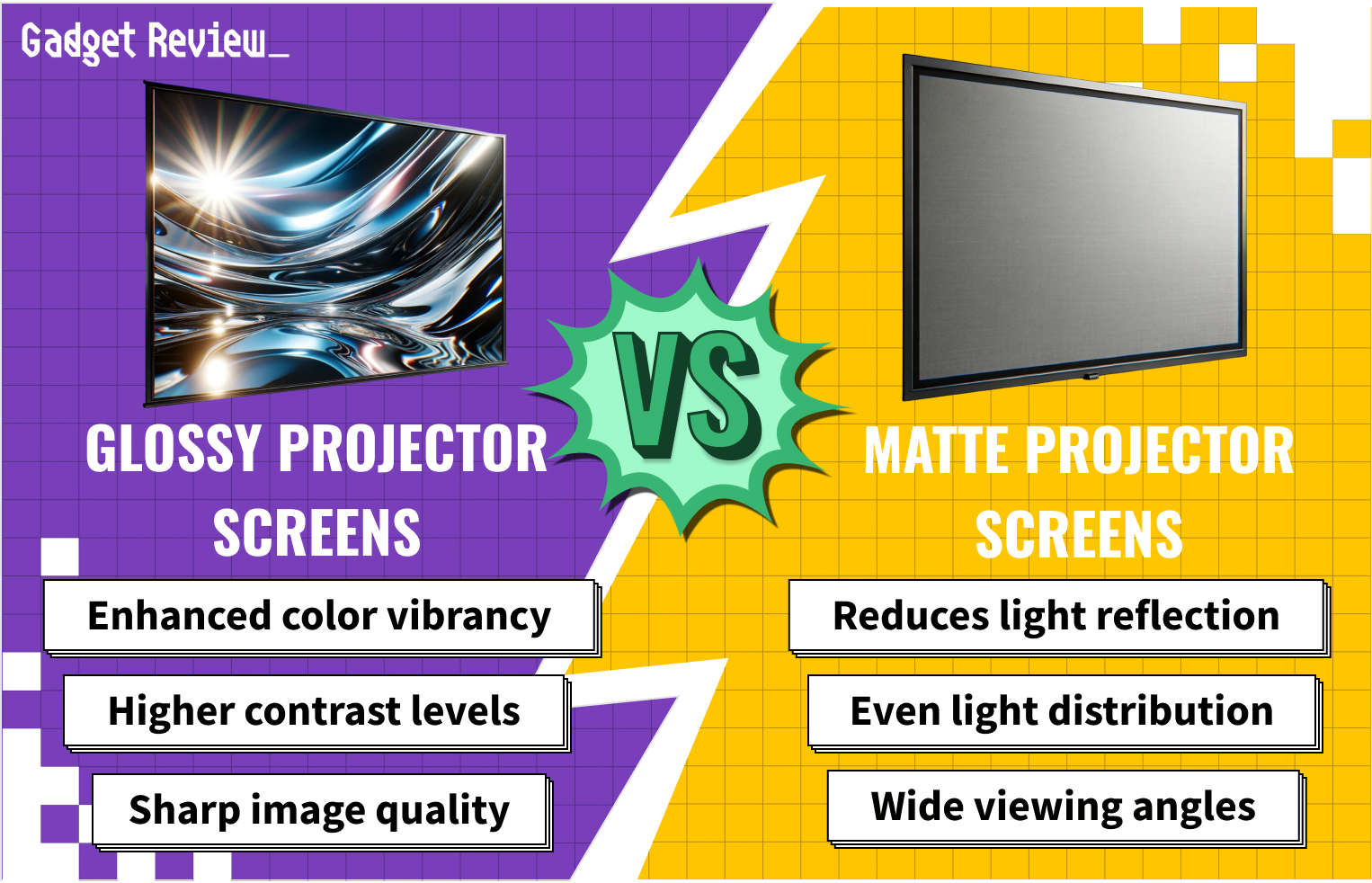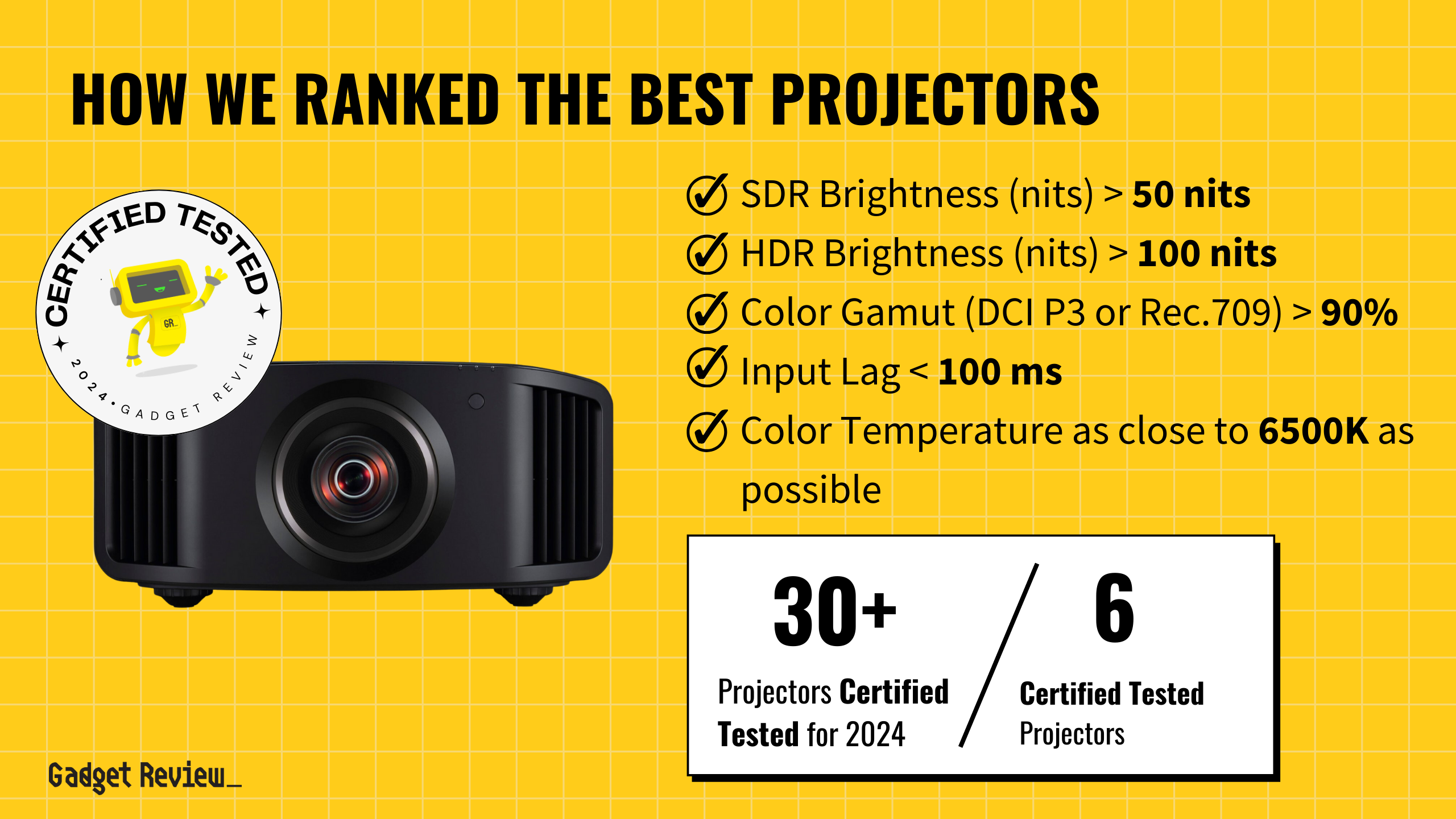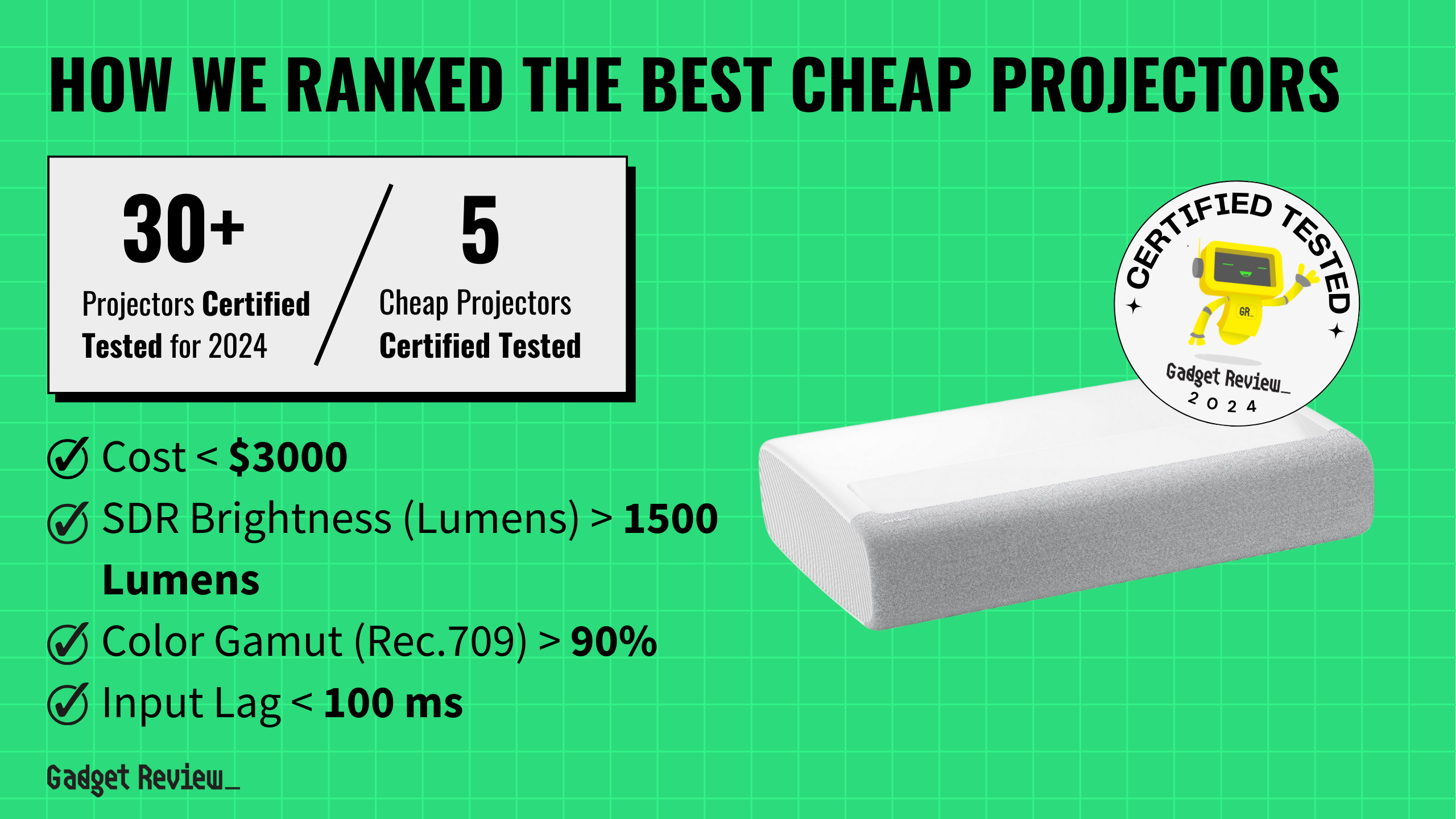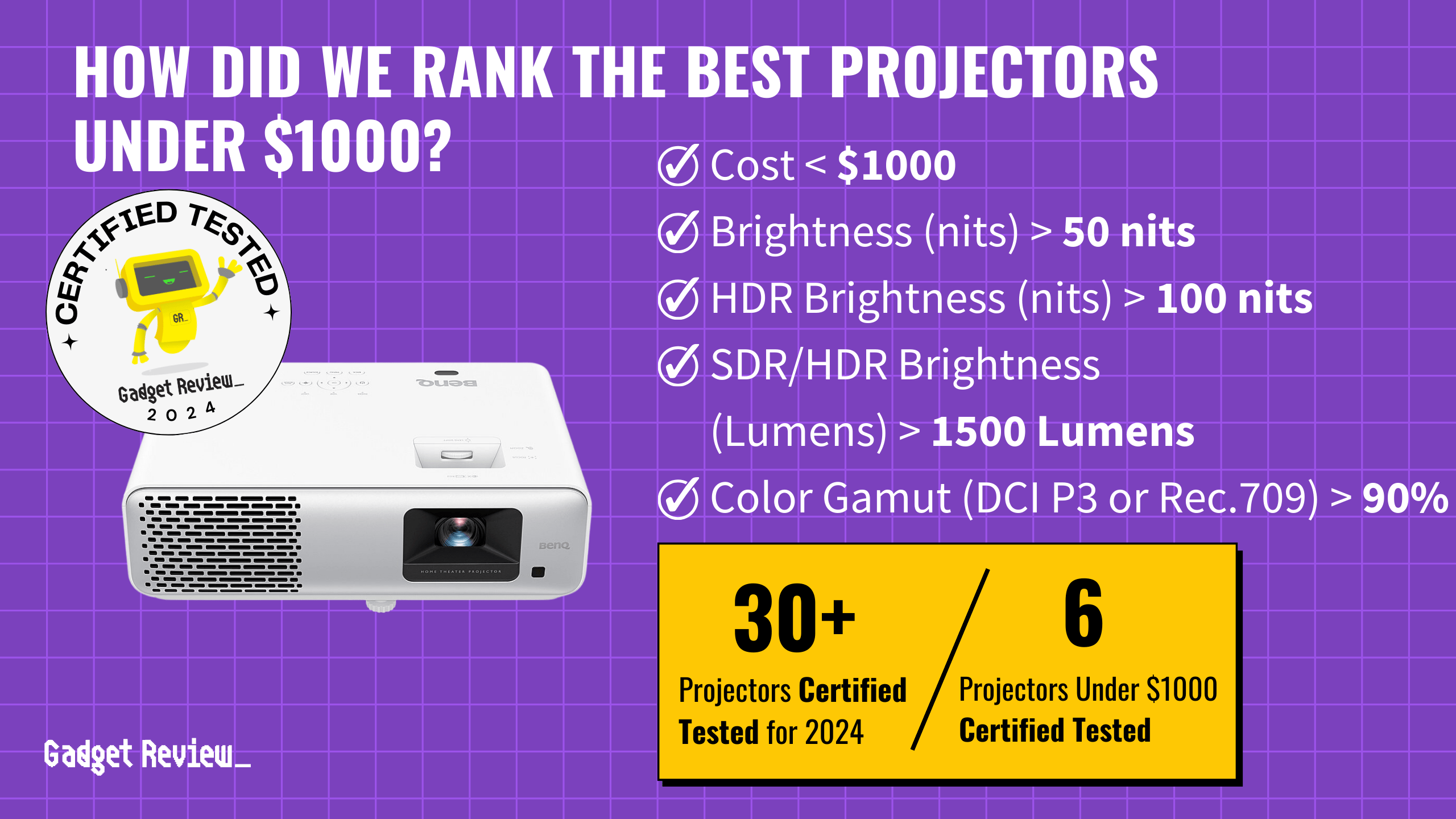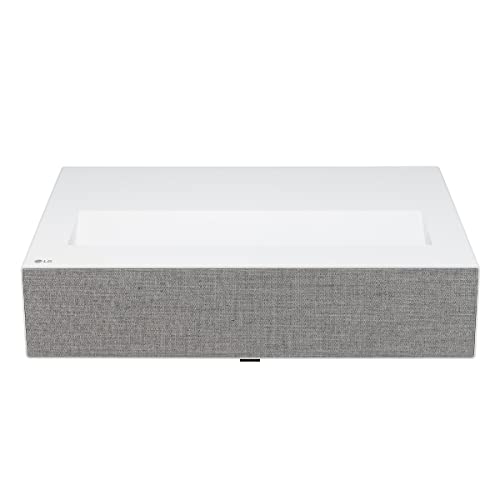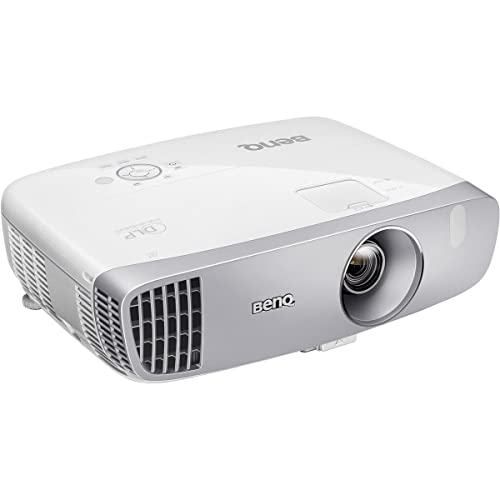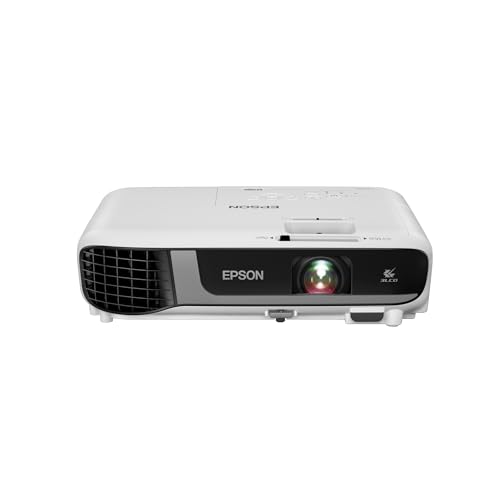An outdoor movie projector lets you get that theater experience anywhere—even in your backyard. Look for key features like portability, high brightness, and durable build quality. Additionally, ensure over 90% DCI P3 or Rec.709 color gamut coverage for vibrant colors and a minimum resolution of 1080p for detailed images. In our evaluation, three projectors stood out from over 30 evaluated.
While we would like to include more data from reviews, not enough reviewers actually tested the projectors. To address this, we relied on our science-based Trust Rating and True Score system to analyze 10,299 reviews. This unique approach helps us filter out unreliable and low-quality reviews, ensuring that the products we recommend are truly reliable based on the available information. The top projectors demonstrated high performance and reliability, making them ideal for outdoor use.
How Did We Rank the Best Outdoor Projectors?
Our buying guide for the best outdoor projectors is based on an exhaustive analysis of over 200 websites, combining expert reviews, testing methods, and customer feedback. While we aimed to include extensive data, not enough reviewers actually tested the projectors. Therefore, we relied heavily on our Trust Rating and True Score system to filter out unreliable sources. Our process identified 1 must-have specification. This rigorous approach ensures our recommendations are precise, reliable, and tailored to your needs.
Our commitment to unbiased reviews is powered by our ‘True Score’ system, targeting low quality and fake reviews. When you shop through our links, you’re backing our mission. Dive deeper to see how.
?️ Minimum Specifications
- Must be portable.
Latest Updates
- 06/21/2024: Republished the list to include the best outdoor projectors based on our True Score system.
Top Outdoor Projectors For 2025
Prices accurate at the time of publishing

Best Overall

Runner Up

Best Value

Best Budget

Best Mid-Range

Premium Pick
Anker Capsule 3
The Anker Capsule 3 impresses with its portability and large screen capability. It is perfect for those seeking a high-quality, versatile outdoor projector that delivers 1080p resolution across various entertainment needs, though it does come at a premium price.
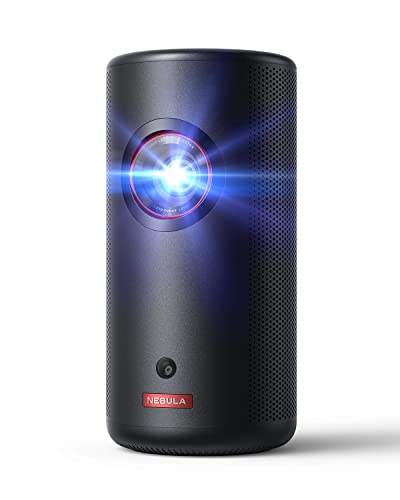
True Score
74768Experts
78439Customers
Mixed Reviews
 $749.99
$749.99Read More
Snapshot
Reasons to Buy
- Good image quality for size
- Reasonably low input lag
Reasons to Avoid
- Poor brightness levels
- No Netflix app
Specifications

Resolution 1920 x 1080 (Full HD) Refresh Rate 60 Hz 
Display Technology DLP 
Contrast Ratio 500:1 
Digital Keystone Yes 
HDR Yes 
Max Distance n/a 
Max Screen Size 120″ 
3D Ready No 
Aspect Ratio 16:9 
Brightness 300 ANSI Lumens 
Depth 6.5″ 
HDMI Type HDMI 2.1 
Height 6.7″ 
Integrated Speakers Yes 
Light Source Laser 
Light Source Life 30,000 hrs 
Min Distance n/a 
Min Screen Size 60″ 
Noise Level 32 dB 
Portable Yes 
Smart Functionality Android TV, Bluetooth, Google Assistant, Google Cast, Remote, Wi-Fi 
Sync Technology n/a 
TV Tuner No 
ThrowType Short Throw 
Video Inputs HDMI, USB 
Weight 2.1 lbs 
Width 3.2″ All Specs
Test Results
SDR Brightness (Lumens) 175 Contrast Ratio (x:y) 138 Input Lag (ms) 22 Color Gamut % (Rec. 709) 92 Color Gamut % (DCI P3 uv) 75 Color Gamut % (Rec. 2020) 56 SDR Color Temperature (K) 6,863 All Tests
All Retailers
- $749.99
- $799.99
Our Verdict
The Anker Capsule 3 is a lightweight, portable projector with a maximum screen size of over 120 inches. It is ideal for creating a cinematic experience right in your backyard. Equipped with a 1080p resolution and a 16:9 aspect ratio, the Anker Capsule 3 delivers crisp, clear images that stay true to the content’s original format.
Beyond traditional movie watching, the Anker Capsule 3 is versatile enough to cater to streaming and gaming needs, thanks to its smart functionality. With built-in apps and multiple connectivity options, including HDMI and USB ports, it adapts well to streaming high-resolution video games and live sports, making it a great all-around entertainment tool for any outdoor setting, including projecting onto a garage door.
The small form factor is great for portability, and its performance punches way above its weight (literally). However, it’s still held back by the fact that small projectors have to compromise somewhere, which is in the 1080p resolution. If you were hoping for 4K quality, you’d be better off looking for a full-size projector.
The Capsule’s biggest drawback is its price. Still, despite the high cost, it is a truly portable keyboard with a comprehensive feature set that supports a wide range of outdoor activities, from video gaming sessions to binge-watching series under the stars.
Read Less

Best Overall

Runner Up

Best Value

Best Budget

Best Mid-Range

Premium Pick
Kodak Luma 350
Ideal for outdoor adventurers and mobile presenters, the Kodak Luma 350 combines ultra-portability with decent video quality and a massive screen potential, making it great for leisure and professional use.
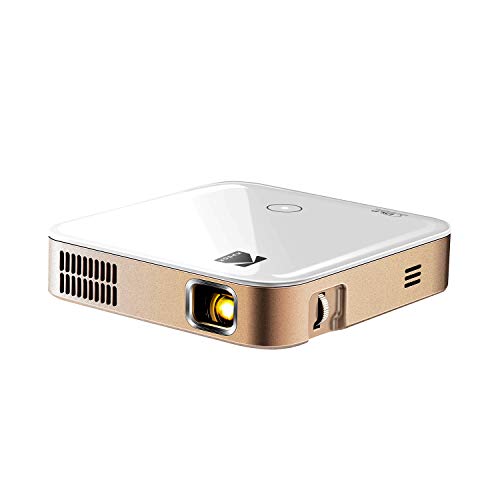
True Score
73754Experts
772kCustomers
Mixed Reviews
 SAVE $50$349.99$299.99
SAVE $50$349.99$299.99Read More
Snapshot
Reasons to Buy
- Exceptional portability
Reasons to Avoid
- Average brightness
- Average image quality
- Prone to rainbow artifacts
Specifications

Resolution 1920 x 1080 (Full HD) Refresh Rate 60 Hz 
Display Technology DLP 
Contrast Ratio 3500:1 
Digital Keystone No 
HDR Yes 
Max Distance n/a 
Max Screen Size 200″ 
3D Ready n/a 
Aspect Ratio 16:9 
Brightness 350 lumens 
Depth 4.5″ 
HDMI Type 2.0 
Height 1.25″ 
Integrated Speakers Yes 
Light Source LED 
Light Source Life 20000 hrs 
Min Distance n/a 
Min Screen Size 40″ 
Noise Level 30 dB 
Portable Yes 
Smart Functionality Android TV, Bluetooth, Remote, USB 
Sync Technology n/a 
TV Tuner No 
ThrowType Short Throw 
Video Inputs HDMI 2.0, USB 
Weight 0.72 lbs 
Width 4.45″ All Specs
Test Results
SDR Brightness (Lumens) 129 Contrast Ratio (x:y) 130 Color Gamut % (Rec. 709) 96 SDR Color Temperature (K) 8,855 Color Gamut % (Rec. 2020) 61 All Retailers
- $299.99$350Save $50
Our Verdict
If you’re looking for a more budget outdoor projector that’s ultra-portable for any kind of excursion, the Kodak Luma 350 is a perfect choice. At just 0.72 lbs and a tiny height of 1.25 inches, this projector is incredibly easy to carry and set up anywhere, enhancing its appeal for users who value mobility.
This model supports 1080p resolution through input upscaling and maintains a 16:9 aspect ratio, meaning the video will look decent. However, the fact that it’s upscaled does mean you’re compromising on some level when it comes to video quality. However, the Luma’s ability to project a huge screen size of up to 150 inches makes this small projector attractive for groups watching movies or playing games outdoors.
Additional features, such as its LED light source, which provides a lifespan of up to 30,000 hours, and built-in Android system for direct streaming from apps, add longevity and convenience to the Luma. Because the projector is so small and piggybacks off your phone, it’s a great portable option for use in offices for business meetings if you have to do a presentation.
Between the attractive budget pricing and tiny form factor, the Kodak Luma 350 is a surprisingly attracivel package, perfect if you need a projector that’s easy to transport and set up without sacrificing too much in the way of video quality. Whether it’s for an impromptu movie night in the park or a professional presentation at an outdoor event, the Luma 350 is built to perform across a variety of outdoor scenarios.
Read Less
Category Snapshot
Projectors
- Total Brands/Products Tested
11 Brands, 30 Products
- Top 2 Brands
Epson, BenQ
- Price Range (Budget-Premium)
$350-$16,000
- Average True Score
81.36
- Important Test Criteria
Brightness (cd/m2)
Contrast Ratio (1000:1) - Most Trusted Testers

- Top Projector Experts
- Typical Warranty
1 year
- Covered by Insurance
Yes – AKKO

Best Overall

Runner Up

Best Value

Best Budget

Best Mid-Range

Premium Pick
Optoma ML1080
The Optoma ML1080 delivers high-quality visuals with great brightness and 3D support. It is suitable for outdoor entertainment and professional presentations and offers robust performance in a portable package.
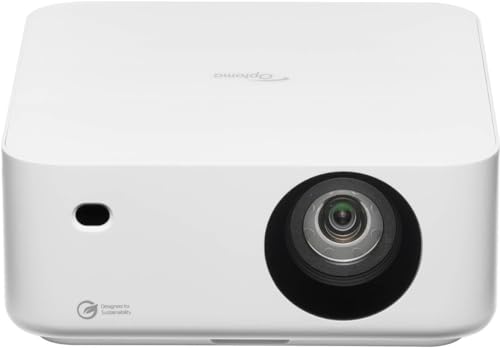
True Score
71722Experts
75294Customers
Mixed Reviews
 SAVE $117$989.00$872.03
SAVE $117$989.00$872.03Read More
Snapshot
Reasons to Buy
- Impressive brightness rating
- High image quality
Reasons to Avoid
- No support for digital keystone correction
- No support for lens shift adjustment
Specifications

Resolution 1920 x 1080 (Full HD) Refresh Rate 60 Hz 
Display Technology DLP 
Contrast Ratio 3,000,000:1 
Digital Keystone Yes 
HDR HDR10, Hybrid Log-Gamma (HLG) 
Max Distance 104.6″ 
Max Screen Size 100″ 
3D Ready No 
Aspect Ratio 16:9 
Brightness 1200 Lumens 
Depth 5.3″ 
Height 2.6″ 
Integrated Speakers Yes 
Light Source Laser 
Light Source Life 30,000 hrs 
Min Distance 62.75″ 
Min Screen Size 59.84″ 
Noise Level 28 dB 
Portable Yes 
Smart Functionality Eco-Friendly, Energy-Saving 
Sync Technology – 
TV Tuner No 
ThrowType Short Throw 
VRR n/a 
Video Inputs USB 
Weight 2.2 lbs 
Width 6.18″ Yes – All Specs
Test Results
SDR Brightness (Lumens) 586 Input Lag (ms) 25 Color Gamut % (BT.2020) 105 All Retailers
- $872.03$989Save $117
- $989.00
- $1,040.94$1,749Save $708
Our Verdict
If you’re after a premium experience with your outdoor projector and don’t mind a slightly larger form factor, the Optoma ML1080 is tailored for high-quality outdoor presentations and entertainment. While its maximum screen size of 100 inches is a bit of a letdown, it does feature a notable brightness of 1000 ANSI lumens, ensuring clear and vivid projections in outdoor settings, even in areas with ambient light.
Its portable nature limits its resolution down to 1080p, but it also supports 3D content, and the projector overall provides sharp, detailed images that are crucial for both high-stakes business presentations and immersive movie watching. Its compact size and light weight make it reasonably portable, although not as lightweight as some of its ultra-portable peers. If you wanted “one hand portable” out of your projector, the Kodak Luma 350 is a third of the price and truly portable – but it’s also worse for image quality because it has to upscale to 1080p instead of supporting it natively.
The ML1080 offers various connectivity options, including HDMI and MHL, supporting a range of devices from laptops to gaming consoles. This makes it great if you need your projector for double-duty outdoors and in board rooms. Additionally, its long lamp life of up to 20,000 hours makes it a reliable choice for frequent outdoor use without frequent maintenance worries.
The Optoma ML1080 is an excellent choice if you prioritize image quality and versatility in an outdoor projector. It also performs admirably if you want a portable projector that can do more. From business meetings to cozy family movie nights in the backyard, it’s a “do anything” portable projector with great performance—and a very steep price tag.
Read Less
Our Trusted Data Sources
We looked at 86+ projector reviewers and found that 16 are trustworthy (60%+ Trust Rating). The three we have listed below are our most trusted for projector.
- Pierre-Olivier Jourdenais – Rtings, LinkedIn
- Geoffrey Morrison – CNET, MuckRack
- Kam Valentine – Projector Reviews, MuckRack
Interested in a comprehensive analysis of our data sources? We’ve got you covered. Below, you’ll find a detailed list of every projector review website we’ve identified, organized by their respective Trust Ratings from highest to lowest. But we didn’t stop there. We’ve meticulously reviewed each publication and verified the data by checking whether the authors have bio links to MuckRack or LinkedIn. We’re committed to not only checking the facts but ensuring their veracity.
Projector Specifications, Test Data & Results
Disclaimer:
Projectors are complex and difficult to test and evaluate, requiring extensive testing on the same level as televisions to paint a complete picture of how any given unit performs. Unfortunately, the testing behind projectors isn’t as rigorous, and a lot of the data we’ve compiled from expert reviewers has been incomplete at times. With different brightnesses measured from different sources, different color gamut tested and spotty contrast ratio measurements, we’ve done the best we can to leverage the available data when putting together these lists but have also trusted our True Score to help us make decisions when the data isn’t available.
1. Brightness (Lumens) Specifications
Brightness (Lumens)
Definition: The amount of light the projector outputs from the lamp/bulb and projects onto the screen when playing SDR content, measured in lumens.
Units of Measurement: Lumens
Tools to Measure: Lux meter
Why It’s Important:
Lumens affect how an image is going to look when projected on a screen. If the projector isn’t putting out enough light, the image quality will suffer.
Projectors have two ways you can realistically measure brightness: in lumens or in nits. Lumens are more common, but brightness in general matters because projectors have to project light strongly enough that it overcomes ambient light without losing detail or color.
Most of the time, a projector is going to be used in a fairly dark room to help give the unit the best chance of displaying content the way it was intended, but higher lumens output let you watch content in progressively bright spaces – or across longer distances on bigger screens. For standard dynamic range content, we recommend at least 1000 lumens for most home applications, but more isn’t a bad thing, and 3000 lumens or more are ideal.
Brightness (Lumens; higher is better; 0 = No Data)
2. Height Specifications
Mini projectors have to actually be “portable”mini”, and one way to confirm that is by looking at the measurements of the projector. Height gives you a decent idea of where you can set a projector, particularly if you want to stow it in a bag or place it on a set of shelves.
We don’t have a specific recommended size for height; you simply need the projector be short enough to suit your needs, which varies depending what kind of storage solution you have for the projector.
Height
Definition: The physical height of the projector.
Units of Measurement: ” (inches)
Why It’s Important:
If a projector is too tall, you’ll have difficulty putting it in tight places, which defeats the purpose of buying a “mini” projector.
Height (Inches; 0 = No Data)
3. Width Specifications
Width
Definition: The physical width of the projector.
Units of Measurement: ” (inches)
Why It’s Important:
If a projector is too wide, you’ll have difficulty putting it in tight places, which defeats the purpose of buying a “mini” projector.
Width is just as important as height when it comes to mini projectors. Get too wide and you’ll run into significant issues with being able to place the projector wherever you want, which is the whole point of getting a mini projector.
We don’t have a recommended size for width; you just need the projector to have a small enough footprint that you can put it wherever you want to or need to.
Width (Inches; 0 = No Data)
4. Noise Level Specifications
Projectors make noise when they’re running, and if the noise level is high, it’s going to start cutting into the content you’re watching. This is distracting, so the quieter a projector can run, the better.
That said, there’s no real “ideal” noise level for your projector, it just shouldn’t exceed 40 dB. For reference, a typical conversation is about 60 dB.
Noise Level
Definition: The amount of noise the projector makes under normal operation.
Units of Measurement: dB (Decibels)
Why It’s Important:
If a projector is loud, it’ll start to distract you when watching movies, especially during quite moments.
Noise Level (dB; 0 = No Data)
5. Maximum Screen Size Specifications
Maximum Screen Size
Definition: The largest screen size a projector can effectively produce without losing focus or quality.
Units of Measurement: ” (inches)
Why It’s Important:
If you have a wall and/or a very large screen that you want filled up with as large an image as possible, maximum screen size is how you fill it up.
Projectors can produce images of varying sizes, and the maximum screen size is as the name suggests: the maximum size screen a projector can output. Anything larger and you start to lose focus and quality.
We don’t recommend a maximum screen size for most applications unless you’re trying to use a projector for a church or outdoors on something like a garage wall. Generally speaking, you should opt for a maximum screen size that is no larger than what you’d realistically try to project. You don’t have to avoid projectors with large screen sizes, but there’s no reason to pay extra if, for example, that’s the only difference between the two choices you’ve narrowed things down to.
Maximum Screen Size(inches; 0 = No Data)
Best Outdoor Projectors: Mistakes To Avoid
- Ignoring Brightness Requirements: Outdoor environments typically have higher ambient light levels compared to indoor settings. Ignoring brightness (measured in lumens) can result in washed-out or barely visible images. Choose a projector with high brightness levels to ensure clear visibility, even in well-lit environments, like outdoors.
- Not Considering Weather Resistance: Outdoor projectors are exposed to various weather conditions such as rain, humidity, dust, and temperature fluctuations. Neglecting weather resistance can lead to damage and decreased longevity. Look for projectors with an IP rating for water and dust resistance, or consider using weatherproof enclosures for added protection. When deciding between an outdoor TV and a projector, consider that outdoor TVs often come with built-in weather resistance, while projectors may require additional protective measures. However, projectors can offer larger screen sizes and more flexibility in placement, making them a great choice for creating a cinematic outdoor experience.
- Resolution Mismatch: Outdoor screens tend to be larger than indoor screens, requiring higher-resolution projectors for crisp and clear images. Ensure the projector’s resolution matches the size of the outdoor screen to avoid pixelation and reduced clarity, especially for text and fine details. For the best results, consider using a 4K projector, which provides exceptional detail and clarity, making it ideal for large outdoor screens.
- Lack of Portability: Outdoor events may require moving the projector to different locations or venues. Neglecting portability can make it challenging to transport and set up the projector effectively. Choose a lightweight and portable projector for outdoor use, or consider factors like handle design and carrying cases for easy transport. Additionally, a short-throw projector can be beneficial for outdoor events, as it allows you to project large images from a short distance, making setup easier and more flexible in various environments. Short-throw projectors are particularly useful in limited spaces, ensuring you can achieve a big-screen experience without needing a lot of room.
The Best Outdoor Projectors Tests & Specs Compared
Product |
True Score
|
Brightness
|
Height
|
Width
|
Noise Level
|
Max Screen Size
| |
|---|---|---|---|---|---|---|---|
| 74 |
|
|
|
|
| $749.99 |
| 73 |
|
|
|
|
| $299.99 $350 $50 |
71 |
|
|
|
|
| $872.03 $989 $117 |







